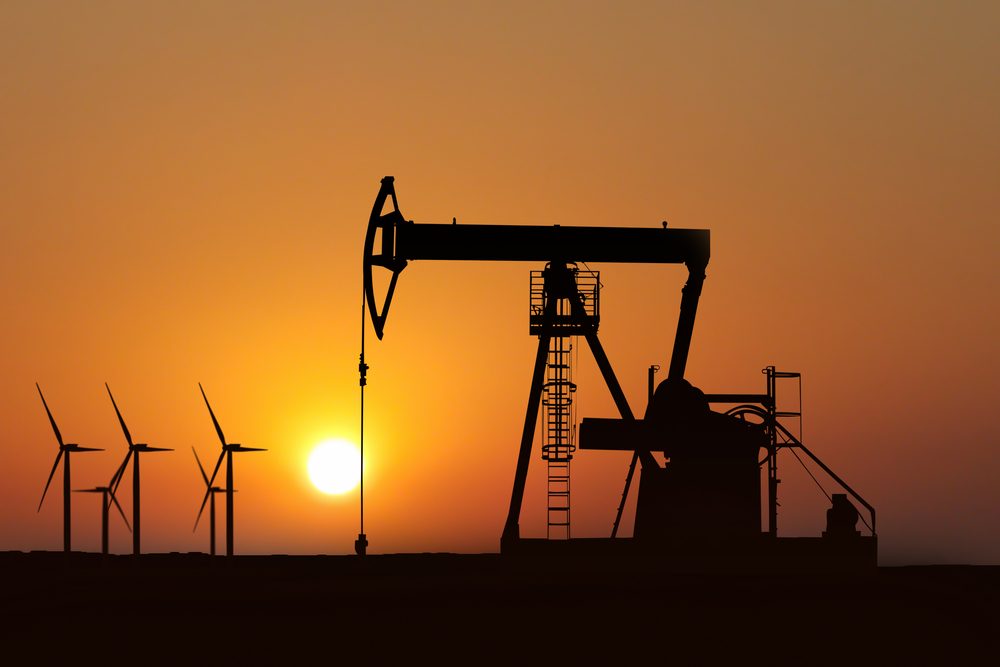We examine how the pandemic may affect oil company dividends and the transition to a greener world.
*We expect many oil companies to announce dividend cuts over the coming months, but we believe that in most cases a dividend suspension is unlikely.
*We believe that the pandemic may increase public and political pressure for more sustainable energy.
*Oil companies’ sustainable energy investment may be compromised if income distribution payouts are not reduced in the near term.
*The current scenario underlines the huge collective effort that will be required for a successful low-carbon energy transition.
Like many businesses around the world, oil companies are having to deal with the ramifications of a collapse in global demand brought on by the Covid-19 pandemic. We discussed the huge price falls and near-term capacity fears for oil in our last blog, but here we will focus on the implications for dividend payouts and the energy transition to a lower-carbon world.
With a raft of energy firms now starting to communicate with the markets on their first-quarter earnings, it is a natural point to update on dividend policy changes owing to Covid-19. Many industries and businesses have already been forced to suspend their payments given the disruption to businesses through this pandemic. This is a key lever they can pull as they attempt to shore up operations and cash flows, but one that in many cases is unprecedented. They have the option to cut a certain percentage of the payment, suspend it completely, or to issue scrip dividends (i.e. give shareholders additional shares).
In our view, the larger an initial cut, the more temporary and directly related to current headwinds a company’s decision is likely to be. If a cut is large, we would expect payouts to be increased again once the worst of the pandemic has passed; however, this does not mean we would expect things to return to how they used to be, and we may even see a new strategy emerge where energy companies opt for a payout ratio related to earnings or cash flow.
This time it’s different…
In 2015-2017, we witnessed an oil glut spurred by members of the Organisation of the Petroleum Exporting Countries (OPEC) seeking to boost their market share of global production. Despite the ensuing oil-price crisis, the oil majors continued to pay dividends, albeit while reducing the cash payment by offering shares at a discount instead of actual cash. However, two very important things were different in that period, which in our view points to a higher probability of dividend cuts today.
First, unlike now, demand remained very strong during the 2015-2017 price collapse; downstream businesses (i.e. refining, chemicals and marketing) were able to benefit from lower oil prices and increased consumption brought on by price elasticity.
Second, it was a period when the industry wasn’t experiencing the current levels of pressure to move to more sustainable energy sources, nor were renewables as cost-competitive as they are today. All in all, there was considerably less investor pressure to push companies towards carbon-reduction targets to limit global warming as set out at the Paris Agreement, which came into effect in November 2016. By way of contrast, going into the current pandemic, management teams at energy firms were under ever-increasing pressure to align themselves with the energy transition, and to participate in bringing it to fruition.
Behavioural change
We have entered a decade in which many commentators already expect to see global oil demand peak, and once the world works its way through the current economic disruption, questions will be raised about the level of oil demand we will return to. The pandemic may inspire behavioural changes that dampen demand growth, such as more working from home, more virtual conferencing, reduced business travel, and lower international travel more generally. The public’s appetite to continue enjoying the benefits of lower pollution, cleaner air and clearer skies may yet inspire an even greater public push for policymakers to avoid the potential devastation that a climate crisis could bring.
Indeed, there are parallels between the crisis at hand and the humanitarian and economic risks posed by climate change. This pandemic may heighten the need for (and focus the minds of) policymakers to take earlier preventative measures to avert the catastrophic impact of climate change. In a post Covid-19 world, the European Green Deal (a set of policy initiatives proposed by the European Commission to transform Europe into a low-carbon economy) could enjoy even greater and more universal support.
Ballooning debt
This decade was already going to be a huge challenge for the sector, but by continuing to pay such high levels of dividends, energy companies will make navigating it even tougher. In our view, companies have the liquidity and balance sheets to make these payments despite very low prices for a few years, but at what cost? Once we get through the current stage (and it could be a long process, with continuing lockdown measures and distancing tactics), companies are likely to want to shrink their balance sheets again: without higher prices or more conducive macroeconomic conditions, it will be difficult to do so while simultaneously seeking to invest in greener energy sources for the future. Many energy firms have been reaffirming their pre-pandemic commitments to increasing spending across new energies and transition businesses, but we anticipate that much of this outlay may be jeopardised if balance sheets are deployed to continue paying current high levels of dividend income during the pandemic.
The options open to energy firms are clear, but the desired course of action is more nuanced. Surplus cash has typically been used to distribute dividend increases, reduce balance-sheet debt, and undertake acquisitions/increase investments, or by companies in simply buying back their own stock. How these levers are pulled depends on the environment at hand, but once balance-sheet debt falls back to previous levels, it becomes a straight choice between distributions and investment. By paying such high and fixed levels of dividends, the flexibility to make this choice later on is more limited.
Much to consider
The boards of oil majors have much to mull over in terms of their dividend strategies. In the near term, there is a risk that, if shareholder distributions are cut too severely, it will alienate the income investor share base. This is why we believe that full suspensions are unlikely, except in the case of distressed names. Expectations for what these companies can achieve around energy-transition spending are high, but are in quite stark contrast with the slow-changing nature of the energy sector itself. It has taken the sector over 100 years to reach its current state, and, while we continue to argue that more investment is needed to accelerate this shift, any transition to greener solutions will not happen overnight, and the current economic climate creates further uncertainty.
However, the pandemic has given us a glimpse of what a more Paris Agreement-aligned world might look like. Oil demand is estimated to be down 30% in April – a figure that corresponds with International Energy Agency (IEA) estimates for a 2-degree Celsius world in 2040. Reaching this level today has been no mean feat; it required unprecedented levels of disruption through the suspension of global travel, as well as domestic lockdowns, huge economic losses and social anxiety. While this situation will eventually pass, it does serve to highlight the challenge that both society and the energy sector face as they attempt to move away from fossil fuels to more renewable energy sources.
This is a financial promotion. These opinions should not be construed as investment or other advice and are subject to change. This material is for information purposes only. This material is for professional investors only. Any reference to a specific security, country or sector should not be construed as a recommendation to buy or sell investments in those securities, countries or sectors. Please note that holdings and positioning are subject to change without notice.






Comments